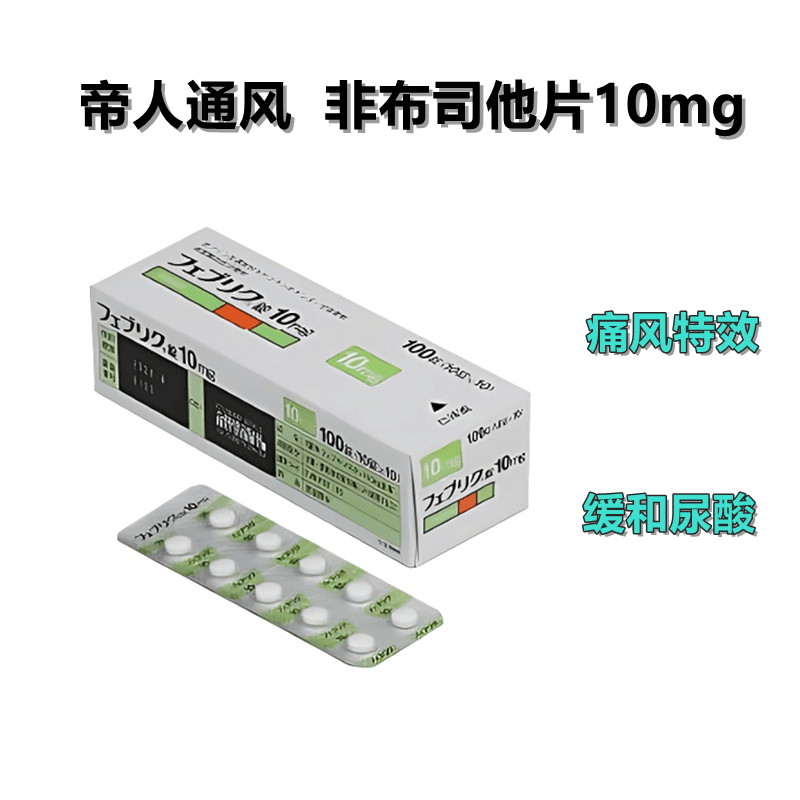Gout is a metabolic disease characterized by joint pain, swelling, and fever. It is caused by high levels of uric acid in the body, leading to the deposition of uric acid crystals in the joints or surrounding tissues. Uric acid is a substance produced by the breakdown of purines in the body, which is usually excreted through the kidneys. However, when uric acid levels are high or excretion is reduced, uric acid crystals may deposit in the joints, triggering gout attacks.
Gout attacks typically begin with sudden, severe joint pain, most commonly in the big toe joint but may also affect other joints such as the ankles, knees, and fingers. During an attack, the affected joint usually becomes visibly swollen, warm to the touch, and may appear red. Patients may experience extreme sensitivity, swelling, and redness in the affected joint, sometimes accompanied by fever and intense pain. If left untreated, uric acid crystals may deposit in the surrounding tissues, leading to joint damage and destruction, and even kidney disease.
The early symptoms of gout typically include the following:
Sudden onset of joint pain: Gout usually begins at night or in the early morning with sudden and severe joint pain, most commonly affecting the big toe joint but may also occur in other joints such as the ankles, knees, and fingers.
Redness and swelling: During an attack, the affected joint usually becomes visibly swollen, warm to the touch, and may appear red.
Restricted movement: Due to joint swelling and pain, patients often experience restricted movement and find it difficult to engage in normal activities.
Skin changes: During an attack, the skin over the affected joint may appear smooth, tense, and sometimes exhibit an orange-peel-like appearance.
Relief of pain: Pain during a gout attack typically gradually subsides over several days to weeks, but without proper treatment, it may recur.
Ignoring gout can lead to serious consequences, including:
Joint damage and disability: Long-term untreated gout attacks may lead to joint damage and disability, sometimes necessitating joint replacement surgery.
Formation of uric acid stones: Uric acid crystals can form not only in joints but also in the kidneys, leading to kidney stone disease, which can cause severe renal colic and kidney function impairment.
Chronic kidney disease: Uncontrolled gout over time may lead to chronic kidney disease. Uric acid crystals deposited in renal tubules and interstitium impair kidney function, eventually leading to renal failure.
Increased risk of cardiovascular disease: Some studies suggest that people with gout have a higher incidence of cardiovascular disease. High uric acid levels are closely associated with hypertension, cardiovascular disease, and stroke.
Negative impact on quality of life: Gout attacks significantly impact patients' daily lives, including restricted movement, pain and discomfort, decreased sleep quality, affecting work, social life, and mental health.
Therefore, timely diagnosis and effective management of gout are crucial. This can be achieved through medication, dietary control, lifestyle changes, etc., to reduce uric acid levels and prevent gout attacks and related serious consequences.

Febuxostat (trade name: Feburic) is a prescription medication used to treat gout and hyperuricemia (high uric acid levels). It works by inhibiting the activity of xanthine oxidase, an enzyme involved in the production of uric acid, thereby reducing the levels of uric acid in the blood. Here is a detailed overview of Febuxostat:
Mechanism of Action:
Febuxostat is a selective xanthine oxidase inhibitor. It works by blocking the action of xanthine oxidase, an enzyme responsible for converting hypoxanthine to xanthine and then to uric acid. By inhibiting this enzyme, Febuxostat reduces the production of uric acid in the body.
Indications:
Febuxostat is indicated for the treatment of hyperuricemia in adults with gout.
It is used in patients who are intolerant to or inadequate responders to other urate-lowering therapies, such as allopurinol.
Dosage and Administration:
The usual dosage of Febuxostat is once daily, administered orally.
The initial dose typically ranges from 40 mg to 80 mg daily, depending on the patient's serum uric acid levels and tolerability.
The dosage may be adjusted based on the patient's response and serum uric acid levels.
Adverse Reactions:
Common adverse reactions include headache, nausea, vomiting, abdominal pain, joint pain, and fatigue.
Serious adverse reactions may include liver function abnormalities, skin hypersensitivity reactions, cardiovascular events, and others.
Precautions:
Patients receiving Febuxostat should undergo regular monitoring of serum uric acid levels and liver function tests.
Alcohol consumption should be avoided during treatment with Febuxostat as it may exacerbate liver burden.
Caution is advised in pregnant and breastfeeding women, as well as in patients with severe renal impairment. Febuxostat should be used with caution in these populations, and consultation with a healthcare professional is recommended.
Febuxostat, marketed under the trade name Feburic, is a valuable option for the management of gout and hyperuricemia. However, like all medications, it should be used under the guidance of a healthcare provider, and patients should be monitored for both efficacy and safety during treatment.
